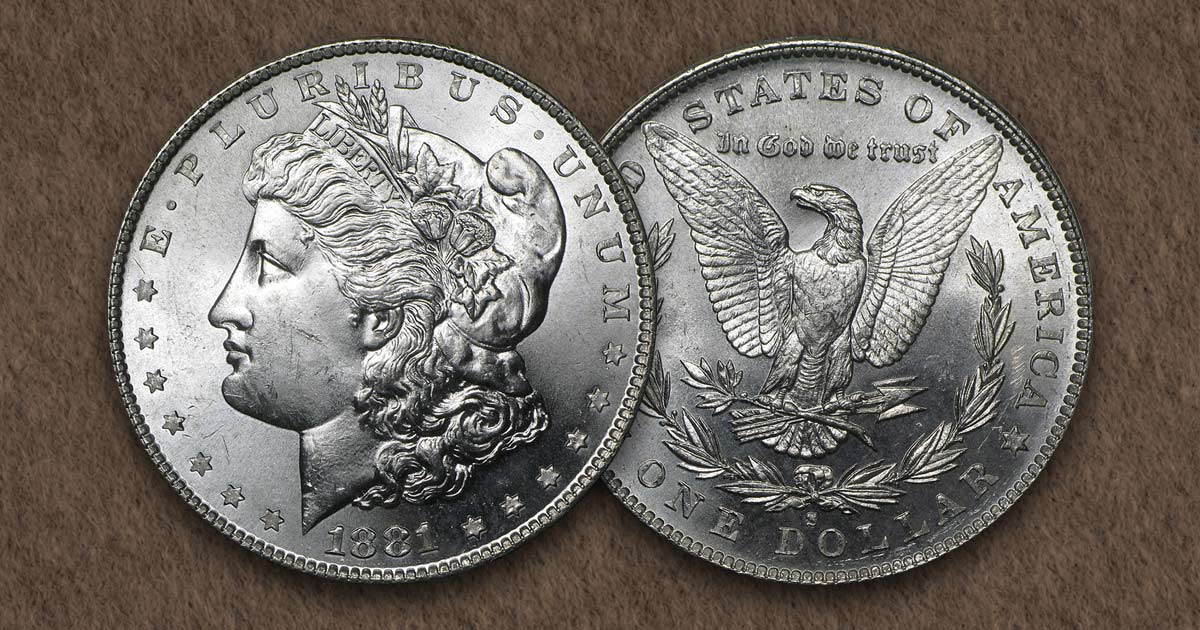
The Morgan Silver Dollar weighs just less than one troy ounce at 26.73 grams and contains 24.05 grams of silver.
Morgan Silver Dollars were composed of 90% silver and 10% copper. They were issued from 1878 to 1904 and again released in 1921 before the Peace dollar was issued. In 2021, Morgan Silver Dollars were minted again for the first time in 100 years.
Background of the Morgan Dollar
The Morgan dollar was designed by George T. Morgan and was the first United States silver dollar that was minted after the Coinage act of 1873. It featured a profile of Liberty wearing a Phrygian cap on the obverse and a heraldic eagle holding arrows and an olive branch in its talons on the reverse.
The Morgan Silver Dollar was first struck at the Philadelphia Mint in 1878. After revisions to the design, it was issued from the San Francisco and Carson City Mints in the same year.
In 1879, the New Orleans Mint began issuing Morgan Silver Dollars as well.
Silver Legislation Between 1878 and 1918
The Bland-Allison Act was passed in 1878 and required the United States government to purchase $2-4 million worth of silver to be coined monthly. In 1890, The Sherman Silver Purchase Act was passed, which mandated additional silver purchases on behalf of the U.S. government. It required the U.S. to buy 4,500,000 ounces of silver monthly.
One of the unintended consequences of the Sherman Silver Purchase Act was a growth in the number of circulating dollars without commensurate gold growth. In 1890, the artificially inflated price of an ounce of silver was $1.16, which fell to $0.69 by the end of 1890.
As the value of the silver dollar shrunk, the Panic of 1893 set in and there was a run on gold. President Cleveland called for an emergency meeting of Congress on August 7, 1893, to repeal the act. In 1895, Congress called for the halt of silver coin production and banks began discouraging the use of silver dollars.
Between 1893 and 1895, there were few Morgan Silver Dollars produced, and those that are available now command a steep premium compared to other issues of Morgan dollars.
By 1905, silver supplies were exhausted and there was no Morgan Dollars produced between 1905 and 1920. This disruption caused the New Orleans Mint to close, as it primarily relied on silver coinage for its business.
The 1921 Morgan Silver Dollar
After World War I ended, the 1918 Pittman Act authorized the melting of existing silver dollars and the issuance of silver dollars to replace the older dollars. This resulted in issuance of the 1921 Morgan Silver Dollar and later in 1921, the introduction of the Peace Silver Dollar.
The 1921 Morgan Silver Dollar was minted using recreated dies since the U.S. Treasury had destroyed the original dies.
There have been thousands of Van Allen Morgan die varieties identified and the Morgan Silver Dollar remains one of the most popular U.S. Mint series for coin collectors.




